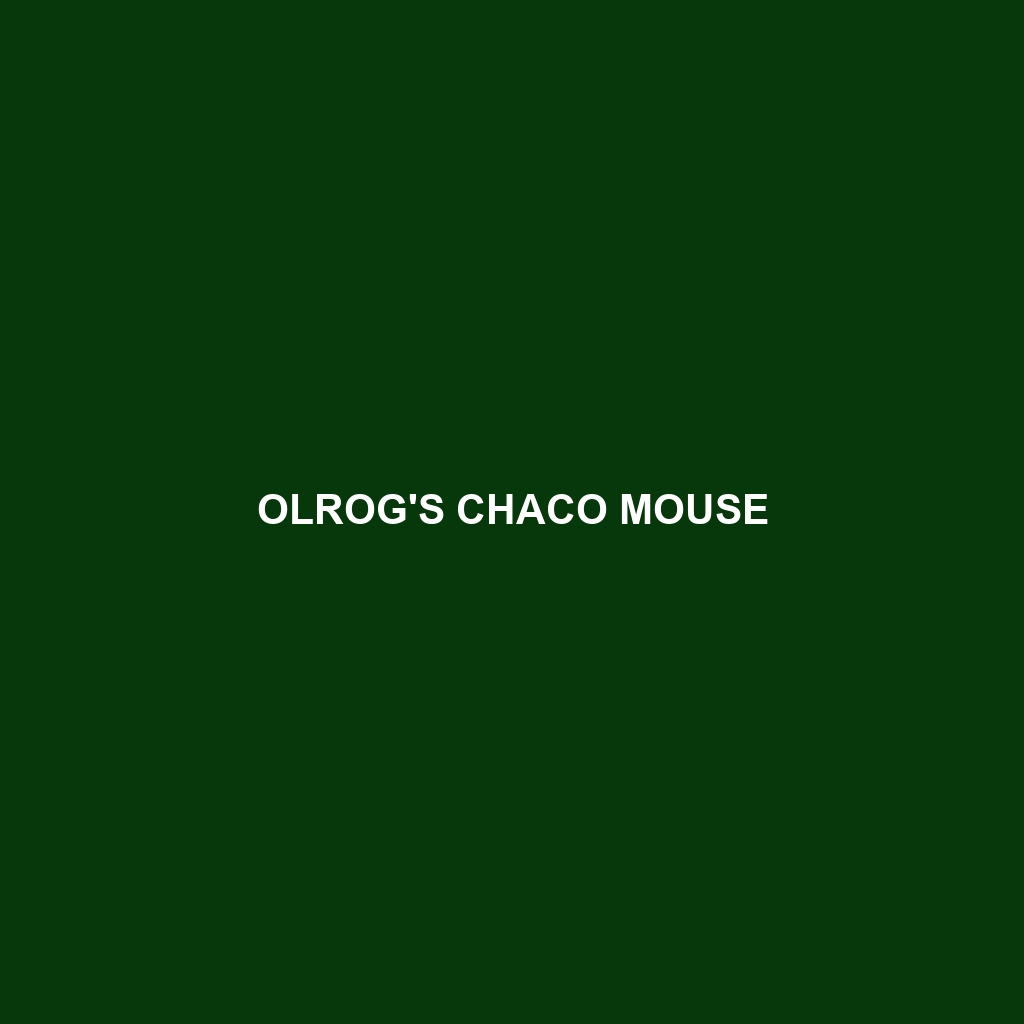Olrog’s Chaco Mouse (Scientific Name)
Common Name: Olrog’s Chaco Mouse
Scientific Name:
Habitat
Olrog’s Chaco Mouse is primarily found in the vast Chaco region of South America, particularly in Argentina, Bolivia, and Paraguay. This mouse inhabits dry forests, scrublands, and areas with sandy soils, thriving in environments characterized by temperate climates and seasonal rainfall. The species favors regions rich in grasses and shrubs that provide shelter and food.
Physical Characteristics
This small rodent typically measures around 9 to 11 centimeters in body length, with a notable long, slender tail that can extend up to 10 centimeters. The fur is soft and dense, presenting a light brown to golden-brown color with a slightly paler underbelly. One distinctive feature of Olrog’s Chaco Mouse is its large ears and protruding eyes, which are adaptations for enhanced auditory and visual capabilities in its natural habitat.
Behavior
Olrog’s Chaco Mouse is primarily nocturnal, displaying increased activity at night. It is known for its burrowing habits, crafting intricate tunnel systems to evade predators and store food. Socially, these mice tend to be solitary but can be observed in small groups during foraging. Their behavior also includes vocalizations for communication, particularly during mating season.
Diet
The diet of Olrog’s Chaco Mouse is primarily herbivorous, consisting of seeds, fruits, and various grasses. They are known to forage actively, collecting food to store in their burrows for later consumption. This species plays an important role in its ecosystem by helping in seed dispersal and maintaining the balance of plant life in their habitat.
Reproduction
Olrog’s Chaco Mouse typically breeds during the warmer months of the year, with a peak breeding season occurring in spring and summer. The female gives birth to a litter of around 2 to 5 pups, which are born hairless and blind. They develop quickly, weaning at about 3 weeks old, and are often independent by 6 weeks.
Conservation Status
Currently, Olrog’s Chaco Mouse is classified as vulnerable due to habitat loss caused by agriculture and urban expansion. Conservation efforts are crucial to protect their natural habitats and ensure the survival of this unique species.
Interesting Facts
One of the most intriguing aspects of Olrog’s Chaco Mouse is its remarkable ability to adapt to varying environmental conditions, making it one of the more resilient rodent species in the Chaco region. Additionally, their keen sense of smell aids them in locating food sources even under the cover of night.
Role in Ecosystem
Olrog’s Chaco Mouse plays a significant role in its ecosystem as both a herbivore and as prey for various predators. It contributes to the biodiversity of the Chaco region by interacting with various plant species and serving as a food source for local predators, thus maintaining the ecological balance.
